| Listing 1 - 10 of 17 | << page >> |
Sort by
|

ISBN: 0700716327 0700716319 Year: 2002 Publisher: London RoutledgeCurzon
Abstract | Keywords | Export | Availability | Bookmark
 Loading...
Loading...Choose an application
- Reference Manager
- EndNote
- RefWorks (Direct export to RefWorks)
Although 'Seibutsu no Sekai (The World of Living Things)', the seminal 1941 work of Kinji Imanishi, had an enormous impact in Japan, both on scholars and on the general public, very little is known about it in the English-speaking world. This book makes the complete text available in English for the first time and provides an extensive introduction and notes to set the work in context. Imanishi's work, based on a very wide knowledge of science and the natural world, puts forward a distinctive view of nature and how it should be studied. Imanishi's work is particularly important as a background to ecology, primatology and human social evolution theory in Japan.
Book
ISBN: 9781517905248 1517905249 9781517905255 1517905257 Year: 2020 Publisher: Minneapolis University of Minnesota Press
Abstract | Keywords | Export | Availability | Bookmark
 Loading...
Loading...Choose an application
- Reference Manager
- EndNote
- RefWorks (Direct export to RefWorks)
"Keeping pace with contemporary Western culture's fascination with monsters, monster theory has attempted to explore the significance of monsters in different genre, media, and cultural contexts; complicating this project however has been the absence of a single volume collecting in one place central approaches and significant works. Monster Theory: A Reader will address this gap and bring together many of the scattered articles, essays, and book chapters theorizing monsters and monstrosity, thereby making the volume extremely useful for researchers and ideal for course adoption for classes involving a focus on monsters"--
Book
ISBN: 9782913217287 2913217281 Year: 2011 Volume: *7 Publisher: Paris : Diffusion De Boccard
Abstract | Keywords | Export | Availability | Bookmark
 Loading...
Loading...Choose an application
- Reference Manager
- EndNote
- RefWorks (Direct export to RefWorks)
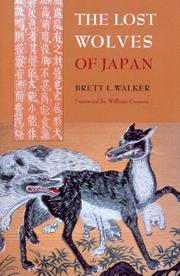
ISBN: 0295989939 9780295989938 0295984929 9780295984926 0295988142 9780295988146 Year: 2005 Publisher: Seattle University of Washington Press
Abstract | Keywords | Export | Availability | Bookmark
 Loading...
Loading...Choose an application
- Reference Manager
- EndNote
- RefWorks (Direct export to RefWorks)
Many Japanese once revered the wolf as Oguchi no Magami, or Large-Mouthed Pure God, but as Japan began its modern transformation wolves lost their otherworldly status and became noxious animals that needed to be killed. By 1905 they had disappeared from the country. In this spirited and absorbing narrative, Brett Walker takes a deep look at the scientific, cultural, and environmental dimensions of wolf extinction in Japan and tracks changing attitudes toward nature through Japan's long history. Grain farmers once worshiped wolves at shrines and left food offerings near their dens, beseeching the elusive canine to protect their crops from the sharp hooves and voracious appetites of wild boars and deer. Talismans and charms adorned with images of wolves protected against fire, disease, and other calamities and brought fertility to agrarian communities and to couples hoping to have children. The Ainu people believed that they were born from the union of a wolflike creature and a goddess. In the eighteenth century, wolves were seen as rabid man-killers in many parts of Japan. Highly ritualized wolf hunts were instigated to cleanse the landscape of what many considered as demons. By the nineteenth century, however, the destruction of wolves had become decidedly unceremonious, as seen on the island of Hokkaido. Through poisoning, hired hunters, and a bounty system, one of the archipelago's largest carnivores was systematically erased. The story of wolf extinction exposes the underside of Japan's modernization. Certain wolf scientists still camp out in Japan to listen for any trace of the elusive canines. The quiet they experience reminds us of the profound silence that awaits all humanity when, as the Japanese priest Kenko taught almost seven centuries ago, we "look on fellow sentient creatures without feeling compassion."
Extinct mammals --- Gray wolf --- Canis lupus --- Timber wolf --- Wolf --- Canis --- Wolves --- Extinct vertebrates --- Mammals --- J7550 --- J7510 --- J1723.30 --- Japan: Science and technology -- biology -- zoology, fauna --- Japan: Science and technology -- biology -- ecology (general) --- Japan: Religion in general -- nature worship
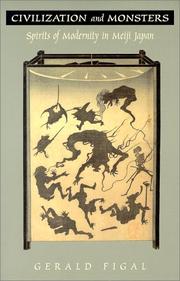
ISBN: 0822324180 0822323842 Year: 1999 Publisher: Durham Duke university press
Abstract | Keywords | Export | Availability | Bookmark
 Loading...
Loading...Choose an application
- Reference Manager
- EndNote
- RefWorks (Direct export to RefWorks)
J1723 --- J4150 --- J5500.70 --- J4140.70 --- J4000.70 --- Folklore --- -Japanese literature --- -Folk beliefs --- Folk-lore --- Traditions --- Ethnology --- Manners and customs --- Material culture --- Mythology --- Oral tradition --- Storytelling --- Japan: Religion in general -- primitive religions -- general popular beliefs and folk religion --- Japan: Sociology and anthropology -- customs, folklore and culture --- Japan: Literature -- history and criticism -- modern, Kindai (1850s- ), bakumatsu, Meiji, Taishō --- Japan: Sociology and anthropology -- cultural history -- Kindai (1850s- ), bakumatsu, Meiji, Taishō --- Japan: Social history, history of civilization -- Kindai (1850s- ), bakumatsu, Meiji, Taishō --- Japan --- Civilization --- -Folklore --- Japanese literature --- -Japan: Religion in general -- primitive religions -- general popular beliefs and folk religion --- -J1723 --- Folk-lore, Japanese --- J4150.70 --- Regions & Countries - Asia & the Middle East --- History & Archaeology --- East Asia
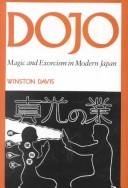
ISBN: 0804710538 Year: 1980 Publisher: Stanford Stanford university
Abstract | Keywords | Export | Availability | Bookmark
 Loading...
Loading...Choose an application
- Reference Manager
- EndNote
- RefWorks (Direct export to RefWorks)
J1741.60 --- J1723.80 --- J1740 --- S35/1000 --- Exorcism --- #SML: Joseph Spae --- Evil spirits, Expulsion of --- Expulsion of evil spirits --- Demonology --- Rites and ceremonies --- Japan: Religion in general -- occultism -- witchcraft and magic --- Japan: Religion in general -- demonology --- Japan: Religion in general -- occultism --- Japan--Religion --- Sukyo Mahikari (Religious organization) --- 崇敎真光 (Religious organization) --- 崇教真光 (Religious organization) --- Sekai Mahikari Bunmei Kyōdan --- Exorcism. --- Sūkyō Mahikari (Religious organization)
Book
ISBN: 9784916055804 4916055802 Year: 2017 Publisher: Tokyo Japan publishing industry foundation for culture
Abstract | Keywords | Export | Availability | Bookmark
 Loading...
Loading...Choose an application
- Reference Manager
- EndNote
- RefWorks (Direct export to RefWorks)
"Since ancient times, the Japanese have lived with superstitions of strange presences and phenomena known as "yōkai," creating a culture by turns infused with unease, fear, and divinity. Tsukimono spirit possessions. Fearsome kappa, oni, and tengu. Yamauba crones. Ghostly yūrei. Otherworldly ijin ... Where did they come from? Why do they remain so popular? Written by Japan's premier scholar of yōkai and strange tales, this book is both an introduction to the rich imagination and spirituality of Japan's yōkai culture and a history of the authors and writings that have shaped yōkai studies as a field"--Back cover.
J1723.80 --- J5620 --- Japan: Religion in general -- demonology --- Japan: Literature -- folk tales, fairy tales, mukashibanashi, ghost stories --- Yōkai (Japanese folklore). --- Animals, Mythical --- Demonology --- Ghosts --- Monsters --- Folklore --- Ungeheuer. --- Dämon. --- Geister. --- Fee. --- Monstres --- Esprits. --- Démonologie. --- Bestiaires (genre littéraire) --- Créatures fabuleuses. --- Mythologie japonaise. --- Fantastique. --- Japan.
Book
ISBN: 9783825868994 Year: 2009 Publisher: Berlin LIT
Abstract | Keywords | Export | Availability | Bookmark
 Loading...
Loading...Choose an application
- Reference Manager
- EndNote
- RefWorks (Direct export to RefWorks)
Religion. --- Ōmoto (Religious organization). --- Japan --- Japan. --- J1960 --- J1723.20 --- J1915 --- J1914 --- Japan: Religion -- new religions --- Japan: Religion in general -- shamanism --- Japan: Religion -- Shintō -- rituals and practices --- Japan: Religion -- Shintō -- sects and schools -- new --- Ōmoto (Religious organization) --- Oomoto --- Ōmotokyō --- Ômoto-Bewegung --- Oomoto (Religious organization) --- Kōdō Ōmoto (Religious organization) --- 大本 (Religious organization)
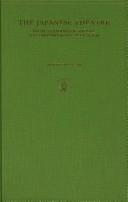
ISBN: 9004093141 9789004093140 9789004484146 Year: 1990 Publisher: Leiden Brill
Abstract | Keywords | Export | Availability | Bookmark
 Loading...
Loading...Choose an application
- Reference Manager
- EndNote
- RefWorks (Direct export to RefWorks)
An up-to-date cultural history of the Japanese theatre in all its forms including primitive rituals, court and popular dance-drama, puppet shows and westernized plays, is narrated here for the first time in English by a western authority in the field. The book underlines Zeami and Zenchiku's secret tradition of the nō , explaining Zen-inspired spiritual teachings for the actor's training on the way to enlightened performance. It also gives relevance to the transformation of an anti-establishment entertainment by prostitutes into spectacular kabuki stagecraft, and to the modernization process which created shingeki modern drama, and moved it into the context of world theatre. The final chapter summarizes the history of western discovery of the Japanese stage. The illustrations, the indexes, the glossary and the extensive bibliography - including all major literature in western languages until 1989 - also contribute to make this volume a must for all students of the Japanese theatre, and for anyone interested in a better understanding of Japanese culture as mirrored in its theatrical component.
Theatrical science --- Japan --- Theater --- Théâtre --- History --- Histoire --- 792.032.12 --- 895.6 --- J6826 --- J6800 --- J1723.20 --- -Dramatics --- Histrionics --- Professional theater --- Stage --- Theatre --- Performing arts --- Acting --- Actors --- Oudjapans theater --- Japanse literatuur --- Japan: Performing arts and entertainment -- theater --- Japan: Performing and media arts -- general and history --- Japan: Religion in general -- shamanism --- -Oudjapans theater --- 895.6 Japanse literatuur --- 792.032.12 Oudjapans theater --- -895.6 Japanse literatuur --- Dramatics --- Théâtre
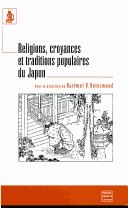
ISBN: 2706814322 9782706814327 Year: 2000 Publisher: Paris: Maisonneuve et Larose,
Abstract | Keywords | Export | Availability | Bookmark
 Loading...
Loading...Choose an application
- Reference Manager
- EndNote
- RefWorks (Direct export to RefWorks)
A une époque de Zen au rabais, déformé et méconnaissable, qui intéresse jusqu'à la publicité dans un monde avide de spiritualité orientale, la " religion japonaise " - shintô ? Bouddhisme ? Les deux ? - Reste encore, à plus d'un égard, un terrain à découvrir. L'ambition de cette chrestomathie est de faire connaître au lecteur les courants majeurs de l'histoire religieuse du Japon, allant de " l'âge des dieux ", où " arbres et plantes disaient des choses " [=partie A] jusqu'au seuil du Moyen Age, i.e. la fin du XIIe siècle qui vit l'éclosion du syncrétisme shintô- bouddhique dans le " pays des prodiges du Sutra du Lotus " [=partie B]. Les auteurs proposent donc - loin des synthèses expéditives ou des regards particularisants -, une initiation concrète et immédiate à la mentalité religieuse japonaise, en s'appuyant sur un choix de textes littéraires, historiques, liturgiques et doctrinaux, presque tous traduits pour la première fois en langue française. Narration mythologique, prières et chants rituels, histoires morales et miraculeuses aux personnages fort attachants [notables, clergé et petit peuple], hymnes en éloge aux bouddhas et bodhisattvas : tout concourt à familiariser le lecteur avec une pensée parfois lointaine, parfois étrangement proche, voire universelle ; pensée propre à l'homme dans sa nature, ses faiblesses et ses aspirations religieuses de tout temps.
Japan --- Japon --- Religion --- J1700 --- J1723 --- Japan: Religion -- general and history --- Japan: Religion in general -- primitive religions -- general popular beliefs and folk religion --- culture populaire --- Folklore --- Church attendance. --- Shinto - Customs and practices. --- Buddhism - Japan - History. --- Mythology, Japanese. --- Folk religion. --- Pratique religieuse - Japon - Histoire. --- Shinto - Coutumes et pratiques - Histoire. --- Bouddhisme - Japon - Histoire. --- Mythologie japonaise - Histoire. --- Japan. --- Japan - Religion. --- Japan - Church history. --- Japon - Vie religieuse. --- Japon - Religion. --- Japon - Histoire religieuse. --- Japan: Religion in general --- Shinto --- Buddhism --- Pratique religieuse --- Bouddhisme --- Mythologie japonaise
| Listing 1 - 10 of 17 | << page >> |
Sort by
|

 Search
Search Feedback
Feedback About UniCat
About UniCat  Help
Help News
News